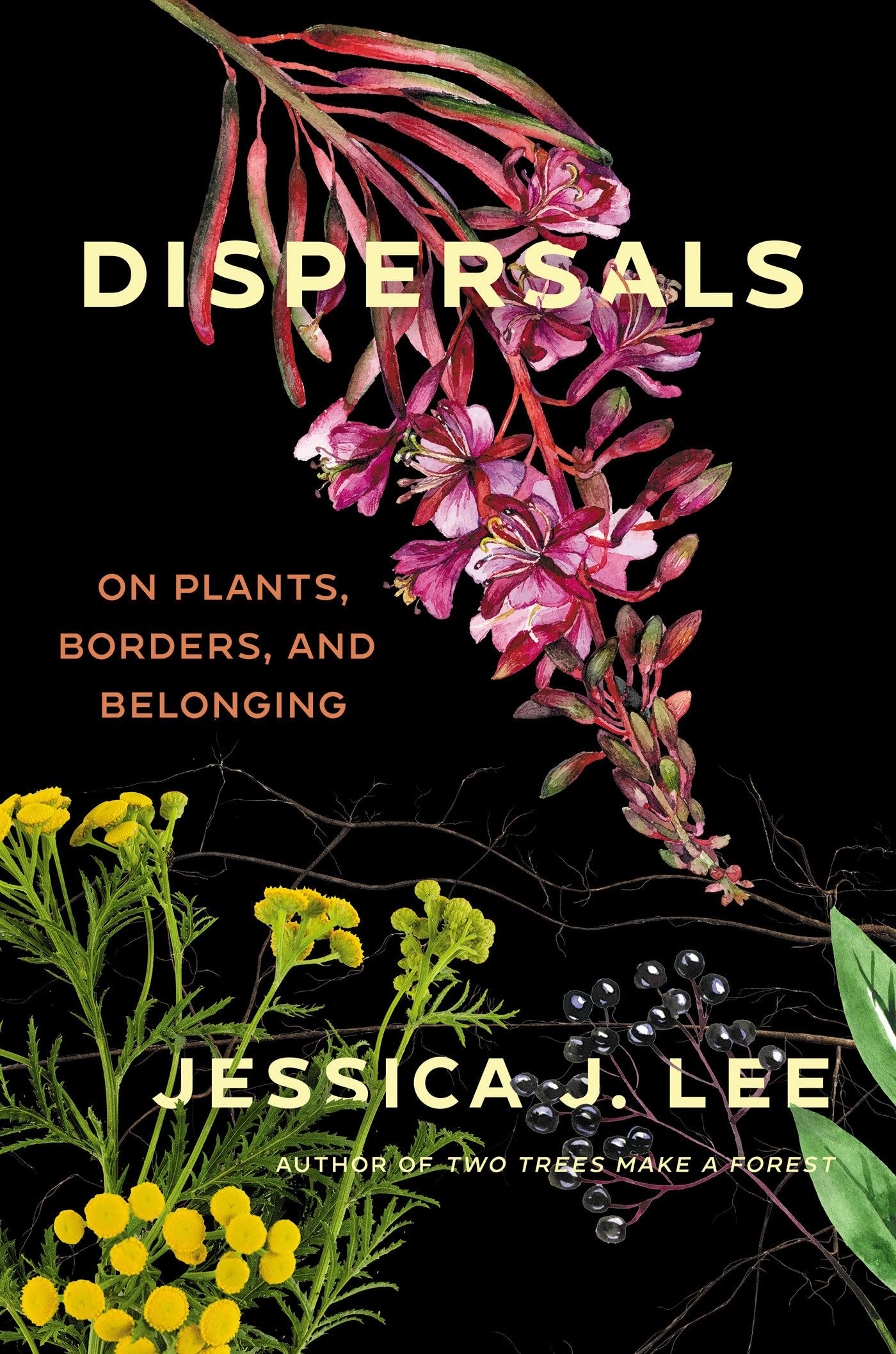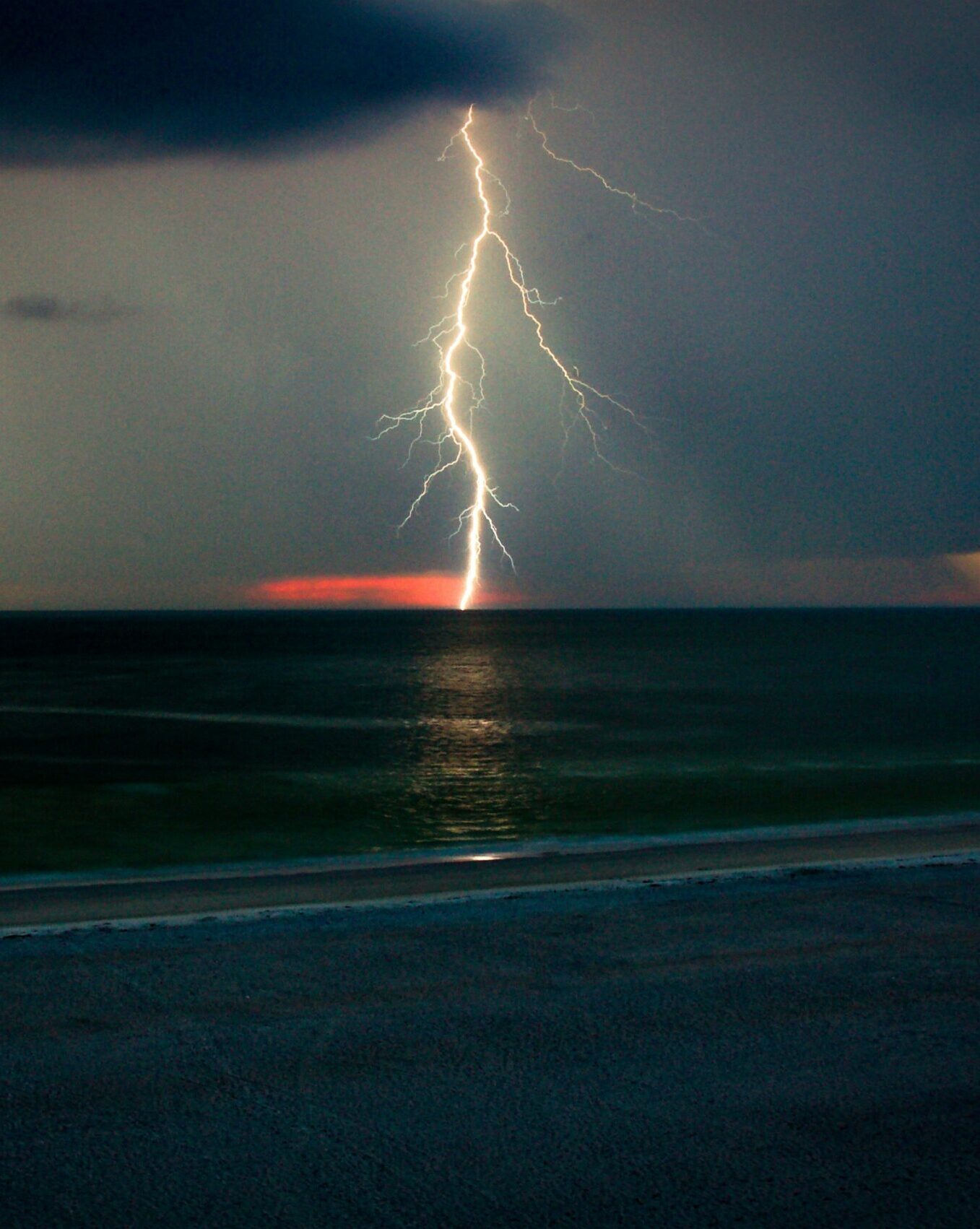By JESSICA J. LEE
Reviewed by KATIE NOAH GIBSON
“These are essays written for a world in motion,” writes Jessica J. Lee in the introduction to her exquisite, haunting third book, Dispersals: On Plants, Borders, and Belonging, a collection of 14 essays examining the movement—voluntary, forced and accidental—of people and plants across landscapes. Writing in a time of massive global migration, and having experienced several recent upheavals in her own life (including motherhood and the COVID-19 pandemic), Lee considers terms like rooted and migration in light of economic structures, political power, and her own Welsh-Taiwanese-Canadian ancestry. She probes, researches, and even delights in the ways in which plants—seeds, trees, rhizomes—consistently defy human notions of borders and boundaries.
Lee begins, in “Margins,” with the koi pond her mother constructed in suburban Canada, her mother’s longing for her Taiwanese homeland made manifest in building a backyard habitat for fish too fragile for Ontario winters. “She planted paper reeds and irises, floated water lettuce in between,” Lee writes, describing her mother’s meticulous creation of the garden in loving detail. Lee’s mother even moved the koi inside each winter, sucking the pond water from buckets into an indoor aquarium, then moving the fish into their temporary habitat, a “glassy world” so different from the green outdoors. Lee then steps back to consider movement and displacement, human-engineered or not: different species of algae and reeds and water weeds, labeled “native” or “invasive” depending on where they take root. She remembers her mother climbing right into the pond to move pots and reposition plants, creating a home from species considered “exotic” in Canada but echoing her ancestral landscapes of Taiwan. (Some of those plants, Lee points out, are native to different places entirely: paper reeds originated in the Nile Delta, but now flourish as ornamental plants on multiple continents, thanks to human intervention.)
Lee goes on to point out the layered difficulties for immigrants, the ways governments make it harder or easier for movement of people to take place, depending on their priorities and the particular political moment. “Not all passports grant the same rights of passage,” she comments, then wonders what it might be like to belong everywhere at once—like certain ubiquitous plants, such as the fronds of sago pondweed Lee first encountered in Germany, considered a “cosmopolitan” species because it thrives on six continents. Even plants often labeled “invasive,” such as the European water milfoil that has migrated to Canada, have tenaciously made homes for themselves wherever they go.
In “Words for Tea,” Lee considers a different form of vegetative contrast: the “twin cultural histories” of her life exemplified by Camellia sinensis, better known as tea. She remembers drinking milky tea out of a yellow-striped mug with her quiet Welsh grandparents, and golden, astringent jasmine tea with her boisterous Taiwanese extended family. She charts the history of Camellia sinensis’ cultivation and export and its movements from its origins in the Eastern Himalayas to its current ubiquity on several continents. She points out the British appetite for tea and its inextricable links to the opium trade and the slave trade; the indentured labor and power struggles on tea plantations; and the political significance of tea in multiple countries and contexts.
“Knowledges and histories shift depending on who’s doing the storytelling,” Lee writes. She shares her own memories of tea rituals past and present—comfort and discomfort bound up in a drink that undergirds her history. “I hold the movements of this plant in my bones,” she admits. In this moment and throughout Dispersals, Lee identifies deeply with plants whose contexts, migrations, and cultural associations often defy or upset easy categorization.
Most recently, Lee has lived in Germany and England, moving back and forth between the two out of both desire and necessity. In “Border Trees,” she writes evocatively about Berlin’s cherry blossoms, many of their “luminescent flowers” growing along the Mauerweg, the route of the former Berlin Wall. In 1989, Berlin received ten thousand cherry trees as a gift from Japan; in a moment marked by both joy and uncertainty (the fall of the Berlin Wall), they were planted in the newly empty space, “blossoms meant to unify a severed city once again.”
Lee writes of the deep pleasure she found walking among Berlin’s cherry trees, but she goes deeper than mere admiration. She delves into the botanical names and origins of various species of cherry trees; the centrality of the sakura to Japanese culture; and the complicated symbolism of these blossoms in imperial Japan. “These are trees that have travelled,” she notes, which can be joyful and exciting, but at the same time, “the legacy of colonisation remains symbolically and intimately linked with the cherries.” Lee is unwilling to reduce these flowers to a splash of joyous pink or a gesture of goodwill between nations; she explores the tension of savoring the blossoms’ beauty while acknowledging their complicated legacy.
As Lee considers the complex migrations of plants, she turns her attention to the people responsible for such migrations, interrogating the (typically male, often white) stereotype of the conquering explorer in “Frontier.” She recalls her childhood love of National Geographic, the detailed maps and yellow-bound magazines serving as a “portal to another world.” Fascinated by details of dolphins and dinosaurs, Lee notes, she absorbed “the essential requirements of an adventurer,” which included telling time, knowing directions, and documenting one’s discoveries. She compares this image to the recorded biographies of many leading Western botanists of the 18th and 19th centuries, who so often “cast distant lands into otherness” and claimed sole credit for their discoveries.
Considering the unsung labors of exploration—translators, local guides, servants and others who often fade into the background behind famous explorers—Lee reconsiders her long-held assumption of adventure as “a solo act.” Highlighting the work of Chinese-American physician and scientist Yamei Kin, Lee begins to envision a kind of exploration that can be generative and collaborative, instead of imperialist or extractive. Kin’s work on producing and fermenting soybeans was instrumental in bringing them to the West a century ago, but she never exploited the farmers or scientists from her home country of China. Lee, who studied international development as a university student, considers the contrast between the “evocative joy” found in many swashbuckling stories of plant exploration, and the power and privilege held by Western explorers who brought back “exotic” plants with little context or regard for the communities where those plants originated.
The book’s last essay, “Synonyms for Mauve,” is a tender meditation on motherhood, weaving together childhood memories; the British Romantics’ idealized landscapes of nature; fields of heather in England and Germany; and Lee’s intense need to create a safe, appealing home for her young daughter during a time of upheaval. “I believe beauty is worthwhile,” Lee writes, while admitting that the pursuit of beauty —and who and what defines beauty—can get complicated. She recalls idyllic afternoons spent with her Welsh grandparents as a preschooler, creating watercolor paint-by-number landscapes alongside her Nan and absorbing British nature scenes through calendar photos and Beatrix Potter books. Later, as a six-year-old on her first trip to Britain, Lee experiences a kind of homecoming as her family hikes through fields of heather. The word “mauve” comes to symbolize the landscapes she already knows, having internalized their details during those art lessons at Nan’s kitchen table.
Lee’s musings turn a bit “meta” here at the end, as she remembers images of heather in Jane Eyre and Anne of the Island, plants whose migrations—like some of her own—are literary rather than physical. “I’ve built my notions of beauty from the stories of a distant land,” Lee writes in a perfect encapsulation of colonization. It will be years, she says, before she learns to appreciate the flora right outside her door; years before she appreciates the layered presence of beauty outside of a narrow definition. As she defines terms such as bramble and heath and lilac, chronicling the late stages of her pregnancy and the fragile days of early motherhood, Lee interrogates notions of home and belonging against the realities of power and empire.
Throughout Dispersals Lee’s writing deftly weaves together the scientific and the poetic. She shares details—Latin names, growing patterns—of particular species of cherry tree alongside evocative descriptions of them, writing, “Spring in [Berlin] was coloured with flirtation, like bubble gum or confetti.” Elsewhere, she notes the Latin and French origins of the word “mauve,” and her attempts to find synonyms that express the depth of the color she loves. But the words in the thesaurus prove limiting, so Lee turns back to story, and to metaphor, telling her daughter about Nan’s paint-by-number landscapes and heather’s complicated links to colonization. “Could this plant belong in [Nova Scotia]?” she wonders. “And, likewise, could the beauty it signifies belong here, too?” This movement, from the particular, observable details of botany to deeper human questions about beauty and belonging, exemplifies Lee’s quest to connect the plants she observes to her own journey as a woman of layered identities. In this collection, Lee continues her insistent, clear-eyed quest for nourishment and vitality, even when both are complicated, and encourages the reader to do the same.
Katie Noah Gibson is a writer, runner, flower fiend and Texas transplant based in Boston. She does communications work for a small nonprofit by day and reads all the books by night. You can find her online at http://katieleigh.wordpress.com, or on Instagram at @katiengibson.





